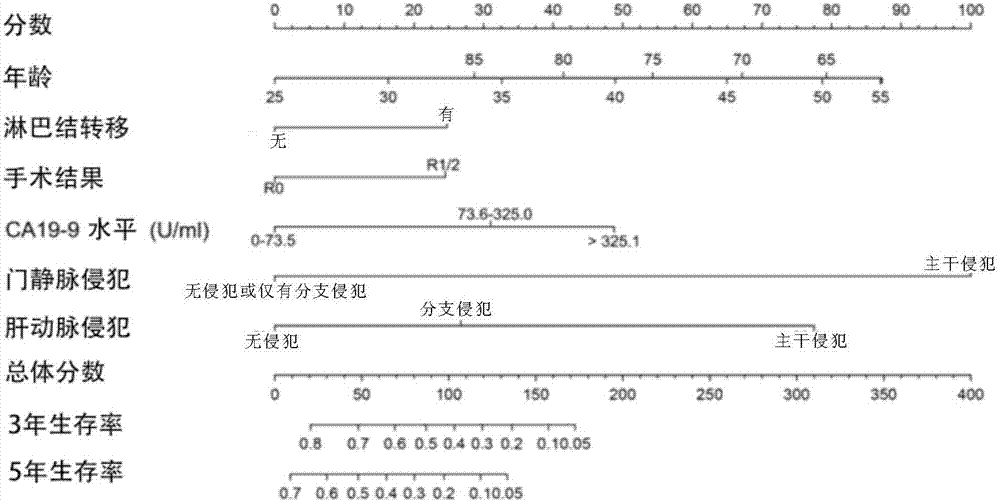Hilar cholangiocarcinoma patient prognosis prediction model
A cholangiocarcinoma and patient technology, which is applied in the field of prognosis prediction models for patients with hilar cholangiocarcinoma, can solve the problems of unsatisfactory patient prognosis prediction, complex scoring system, and not widely promoted clinical applications.
- Summary
- Abstract
- Description
- Claims
- Application Information
AI Technical Summary
Problems solved by technology
Method used
Image
Examples
Embodiment 1
[0317] 1. Experimental steps
[0318] 1.1 Population screening
[0319] Firstly, the clinical information of patients with non-metastatic hilar cholangiocarcinoma diagnosed and treated in Dongfang Hepatobiliary Surgery Hospital Affiliated to Second Military Medical University from 2000 to 2009 was retrospectively analyzed to construct a prognostic model. Patients with intrahepatic cholangiocarcinoma, distal cholangiocarcinoma, metastatic cholangiocarcinoma, and undiagnosed tumors were excluded; patients with liver cancer invading the hilar cholangiocarcinoma and patients with hilar cholangiocarcinoma who could not receive surgery were excluded (Bismuth Stage IV, or Bismuth IIIa and IIIb patients with absolute contraindications for contralateral portal vein invasion); patients who died of surgical complications 1 month after surgery were also excluded. 235 patients with hilar cholangiocarcinoma who met the inclusion criteria became the training set for constructing the prognos...
Embodiment 2
[0346] Will figure 1 The nomogram is scaled up in equal proportions and printed on A4 paper with a common printer to obtain the card of this embodiment.
Embodiment 3
[0348] Will figure 1 The nomogram is scaled up in equal proportions, and printed on an A4-sized PVC sheet with a conventional printing machine to obtain a plastic material card.
PUM
 Login to View More
Login to View More Abstract
Description
Claims
Application Information
 Login to View More
Login to View More - R&D
- Intellectual Property
- Life Sciences
- Materials
- Tech Scout
- Unparalleled Data Quality
- Higher Quality Content
- 60% Fewer Hallucinations
Browse by: Latest US Patents, China's latest patents, Technical Efficacy Thesaurus, Application Domain, Technology Topic, Popular Technical Reports.
© 2025 PatSnap. All rights reserved.Legal|Privacy policy|Modern Slavery Act Transparency Statement|Sitemap|About US| Contact US: help@patsnap.com



